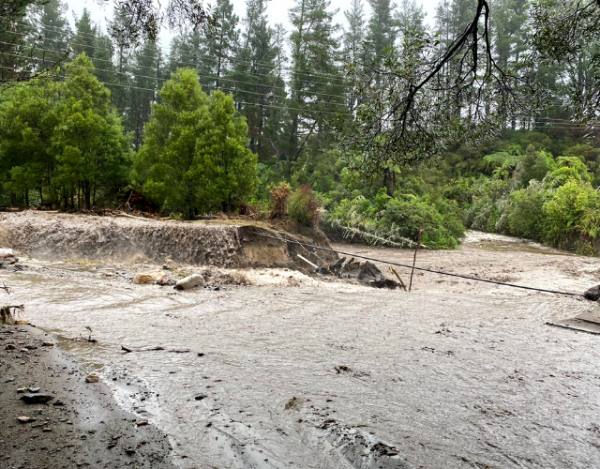Good planning and communication behind airlift rescue
24 March 2022
A well-executed helicopter rescue typified what was a successful deployment to the West Coast floods for Fire and Emergency’s Southern Urban Search and Rescue (USAR) team earlier this month.
Eleven USAR personnel were deployed to the coast to assist with the Emergency Management Assistance Team (EMAT), drone operations, Rapid Disaster Assessments, as well as evacuations and other logistics.
Five of those personnel, Josh Vermeulen, Chris Calveley, Rob Schiphorst, Charles Arrowsmith and Blair Robertson, were involved in a rescue on 4 February which made headlines as they extracted a stricken family of four from their farm.
The road out of their property had been cut off by a nearby river and an attempt to get through in a tractor had been unsuccessful, leaving them stranded on high ground.
Chris said they had a Working Safely in Water kit, but did not have to use it as they could reach the family without having to enter the water by cutting through bush and going over a few fences.
“While the father and his two dogs were able to walk out with the team, given the proximity of the Murchison Heli Tours helicopter the call was made for the mother and two children to be airlifted to safety.
“The chopper was right there, so it just made sense to get the chopper in and get them to safety straight away, rather than trying to get them through the bush. There was climbing over fences and things like that – it would’ve been a nightmare.”
Chris said the key to the successful rescue was two-fold: good planning and good communication.
“We were able to keep miles away from the water, which is the best thing to do. If you don’t have to go near the water, then don’t go near it. That’s the message really. Do your risk assessment and if you can do the job without going near the water, then that’s the best way of avoiding risk.
“The other reason it went so well was because we had really good communication from Josh down on the road, to the team further up by where the road had been washed out and the third team that went down through the bush to locate the people, as well as communication with the chopper.”
Outside of the rescue, Chris said the rest of the deployment had gone well.
“It was a pretty straightforward deployment. Everyone was doing everything they could to make things better and you get the best out of people in those situations. It was really nice to see.
“Hats off to all the USAR guys, they left a good reputation when they departed, as they always tend to do.”














